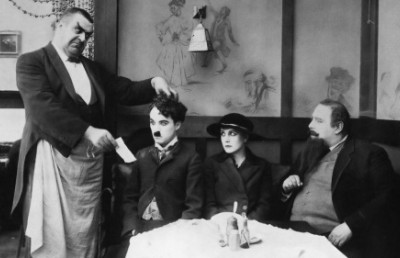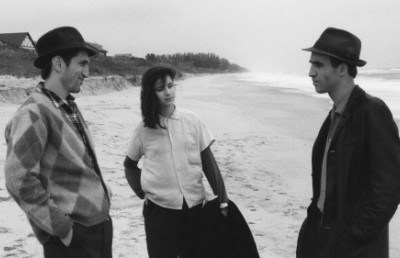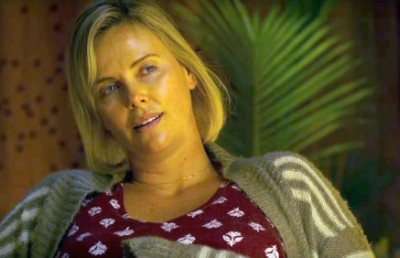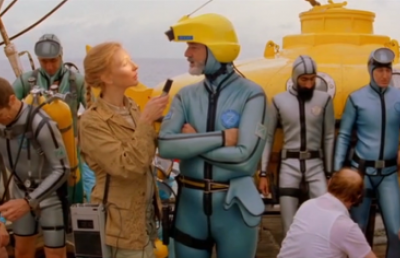Film Society at the Westmount Park United Church
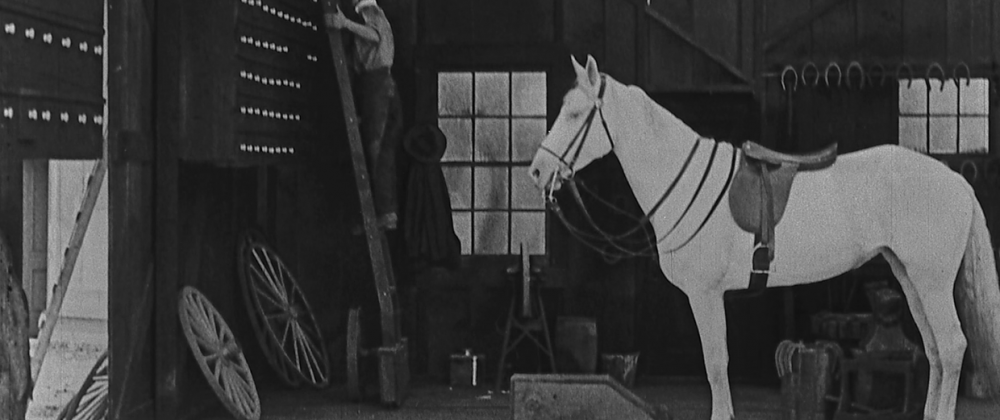
Montreal impresario, filmmaker, and film collector Spurrell always has a ‘hook’ for the benefit screenings he holds at the Westmount Park United Church to support his long-lasting organization, The Film Society, a local National Treasure for Montreal film buffs. On this occasion the ‘lure’ was pitting three greats of silent comedy in a “winner take all” audience battle, where the audience at the end of the night votes by applause for who they thought was the funniest comedian and best musician accompanying the film.
After giving the capacity audience in the gorgeous 19th century Methodist Church a chance to settle into their pews (or seats), the evening started off with a slightly abridged version of Harold Lloyd’s classic thrill comedy Safety Last (1923) with Guillaume Martineau playing piano; followed by Buster Keaton’s 1922 short The Blacksmith, accompanied on the church’s famed 100 year old Casavant organ by Shayne Gryn; and ending with Chaplin’s seminal Mutual short The Immigrant, with Karine Bétournay on the piano. After the vote, which saw Lloyd on top as comedian and a shared winner pianist of all three, Spurrell surprised the audience with an additional Max Linder short, Max Gets Married from 1909. The Linder might have been the best looking print of the night, though it was missing intertitles. . The Lloyd print, though perfectly acceptable, was the worse of them, being darker (though this did not detract from the screening or stop Lloyd from winning the contest).
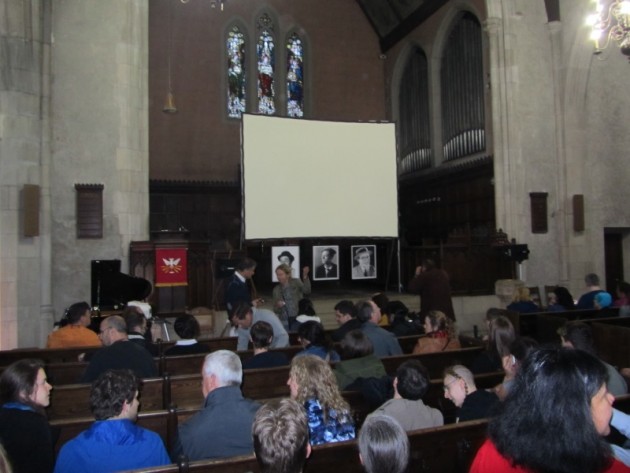
At the Holy Altar of Cinema
For the uninitiated the battle was rigged by the uneven relation of the chosen film to the respective comedian’s career. The comedian most short changed was Keaton, because The Blacksmith is not one of his better shorts, whereas Lloyd was represented with one of his most famous and greatest feature films, and one indicative of his ‘thrill comedy’ style, and the Chaplin film comes from his greatest period of creative flourish, his Mutual Studio films of 1916-1917, and The Immigrant being perhaps his greatest (if not funniest) short of his career, for being a concise distillation of Chaplin’s unique ability to blend comedy with social consciousness. Linder’s appearance was a bonus and not in the running for the big prize, which is fair since Linder’s genius is in coming before the others and his true worth is in a cumulative awareness of his shorts, which were all one-reelers, unlike the other comedians who made two and three-reelers, which gave the comedians more space to develop gags, story and character, not counting the few features Linder would go on to make of course. Linder ventured into the feature film with Seven Years Bad Luck his most well circulated film, no doubt conditioned by availability of prints. Unlike the other three comedians, who all lived relatively long prosperous lives, Linder’s life was cut short by a double suicide he committed with his wife in 1925. Suitability of film selection to career assessment aside, there is little doubt that the selection of the films was partly conditioned by availability of prints, and the contest was really conducted and accepted by the audience in the spirit of fun.
_630_420_90.jpg)
Lloyd’s feature Safety Last was indicative of his comic persona of the normal everyman who succeeds and climbs the social ladder on sheer determination and hard work. His literal and figurative rise to popularity coincided with the Roaring Twenties, the Jazz Age, when the American economy doubled, urban population grew and mass consumerism flowered. Lloyd as the horn-rimmed glasses go-getter character often depicted his rise up the economic ladder in literal terms, with his character climbing up a tree in Kid Brother (1927) or, as in Safety Last, up the side of a building.
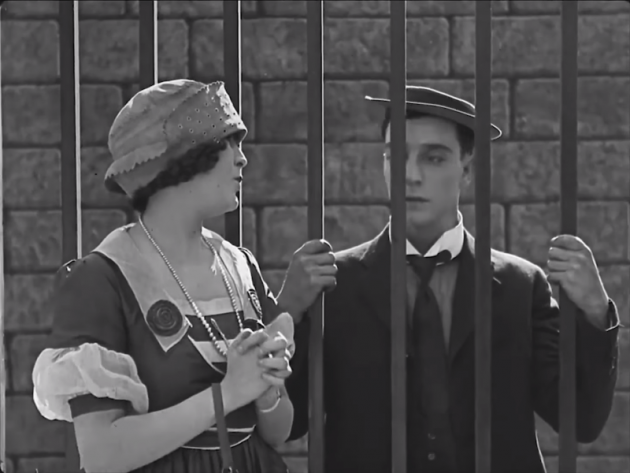
Cops Opening Gag: Poor Buster is in Prison
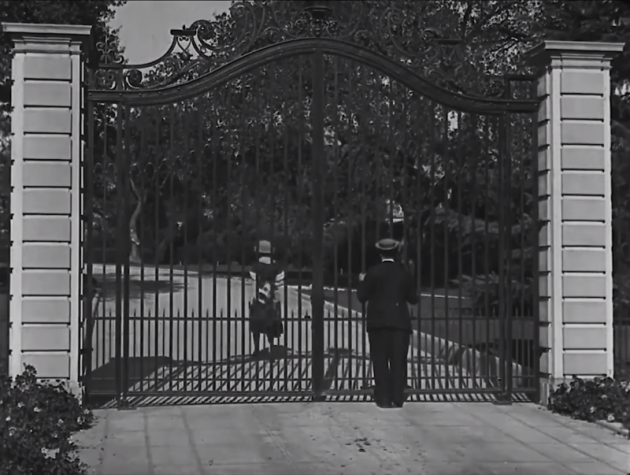
Reverse Cut Says Otherwise
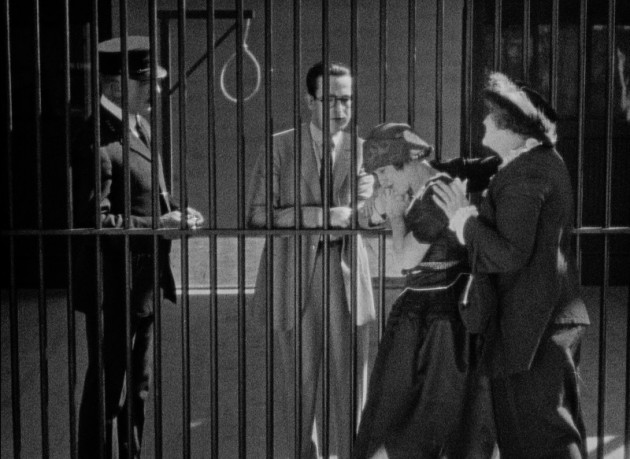
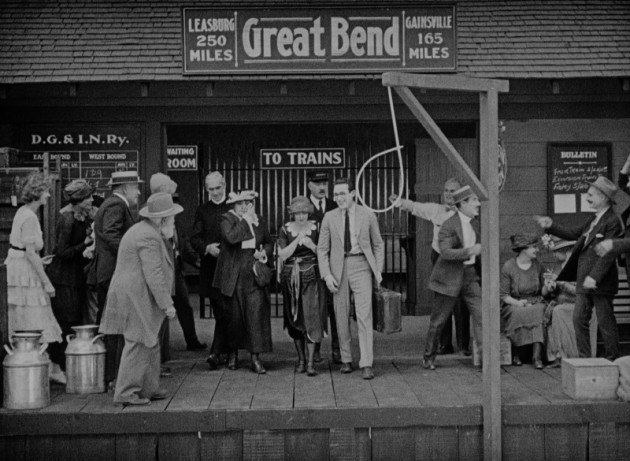
To complete the parallel and demonstrate how lifting gags from your peers was fair game in the good old silent days, The Immigrant also opens with what Noel Carroll calls a “Switch Image” gag. I call it the reverse reveal. We are on a ship, rocking heavily to the force of the ocean waves. People everywhere are sick, vomiting, or about to vomit. Cut to the back of a man who is hanging over the side of the ship, shaking his whole body. We assume he is vomiting overboard. Instead he pulls up with a fish on a string, flipping the image to reveal a man who, unlike everyone else, is anything but sick: happy, smiling, hungry.
Interestingly, even if Blacksmith is far from Keaton’s best, his opening gag is great and reflects an important difference (to even the described flip image gag in Cops) to the other two comedians in three important ways: 1) reveal is achieved in the flow of the shot and not through an edit 2) it is absurd or surreal rather than funny, and 3) it is more varied and I’d say interesting cinematically. The gag also demonstrates another difference Keaton has with his contemporaries: more of a reliance on long and extreme long shots.
The gag opens with a long shot of Keaton leaning with one hand against a chestnut tree (or so tells us the intertitle card, though it does not look like any chestnut tree I’ve ever seen), a fine sign image of Keaton alone against the world. The camera begins to tilt up along the truck of the tree, revealing an extremely tall tree with short palm leaves at the top. This reveal is funny, by marking an absurd incongruity between the type of tree and its size. Keaton adds a great topper by cutting to an extreme shot that is so far away that we see both him, as a tiny figure, against the tree and the whole of the tree, which completely overwhelms Keaton’s tiny figure.
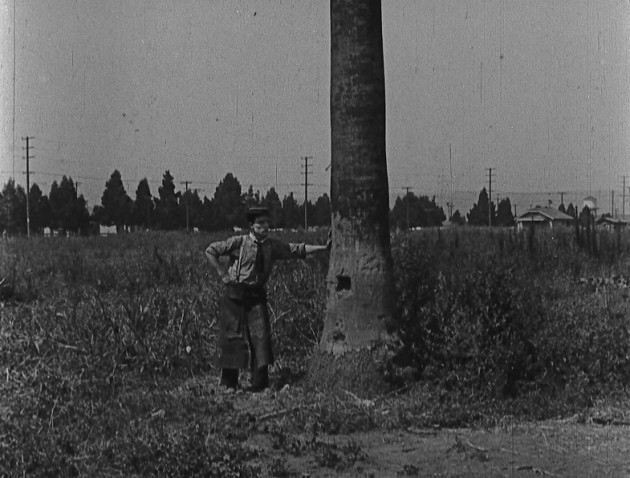
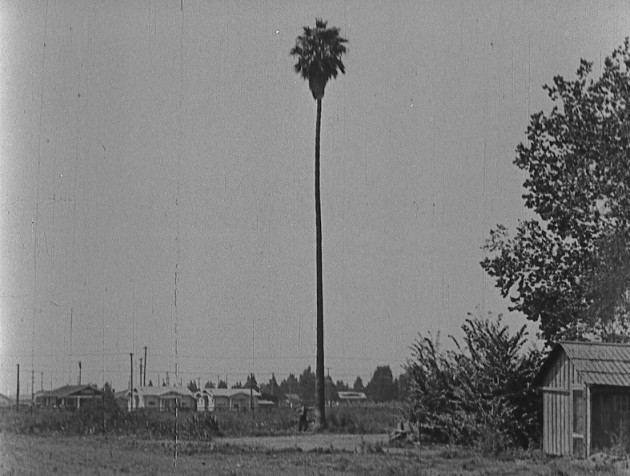
It is yet another wonderful manifestation of Keaton’s relationship with the world around it: he merely exists in it and, unlike Lloyd or (more so) Chaplin, never suggests ownership or mastery over reality. The Blacksmith feels different than other Keaton’s and like Chaplin in that much of it involves his character sparring with a co-worker, in this case another blacksmith played Keaton regular Joe Roberts, who plays a similar function –the heavy– as Eric Campbell’s head waiter in The Immigrant. Some funny moments are drawn from a large magnetic horseshoe hanging above the blacksmith’s door which sucks up various props (a sledgehammer, a gun); while Keaton gets some good mileage playing a shoe salesman to a horse being outfitted with horseshoe). (In the amazing footage in Kevin Brownlow’s documentary Unknown Chaplin (1983), we learn that Chaplin filmed initially with Henry Bergman as the tough waiter, but switched to the much bigger Eric Campbell when he realized the scenes between Bergman and Chaplin were not working enough, with Bergman not providing the right menace and intimidation as Campbell. Bergman was switched over into the role of the benign Artist). Keaton does manage with Blacksmith to make use of one of his favorite movie props, the train, including a few dry run gags he would perfect in The General and one great gag where a phony looking train careening off its tracks is revealed as a train set in Keaton’s (now married) home (one of many moments of Keaton poking fun at domestic life).
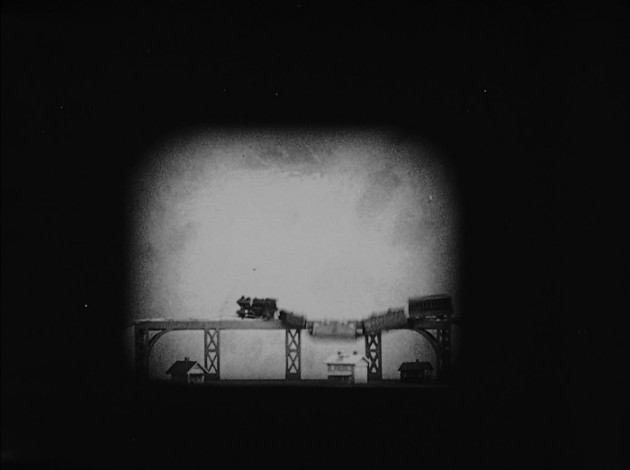
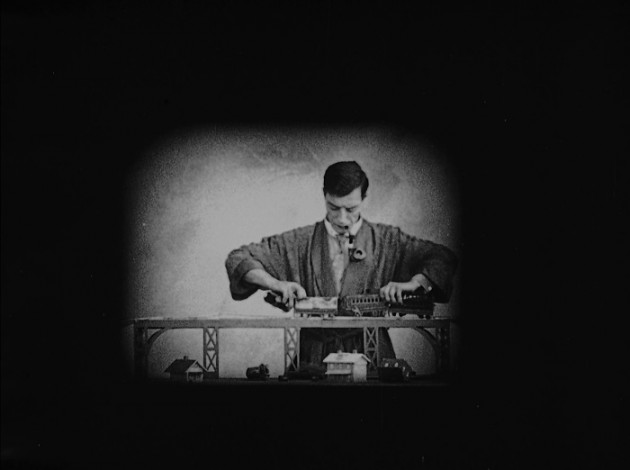
Like many Keaton shorts, the film ends with the type of reflexive gag that makes his films feel more modern than Chaplin or Lloyd: Keaton walks toward the camera and draws shut a curtain with serves as the End Title Card.
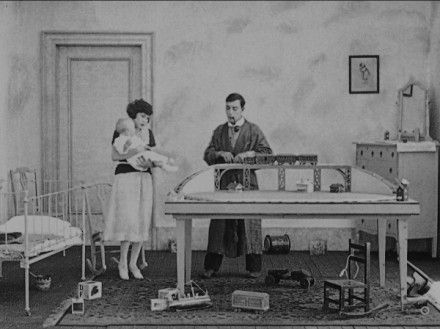

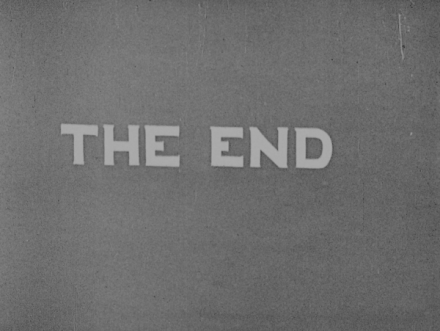
One of Lloyd’s character markers in contrast to Chaplin, the outsider, and Keaton, the ghostly enigma or stranger in a strange land, was of a normal guy who just wanted to succeed and fit into society. Much more so than Chaplin or Keaton, Lloyd typified the economic upturn of the 1920s Jazz Age. Safety Last also marks the summit of the ‘thrill comedy’ invented by producer Hal Roach where normal characters are placed in precariously high places to generate both fear (for the character’s safety) and comedy (largely because it is not us up on that high ledge!). To quote a famous scribe (maybe it was Woody Allen), if you fall into a pool of mud it is tragedy, if someone does, it is comedy. In many of Lloyd’s great thrill comedies, such as the shorts Look out Below, 1918, Ask Father, 1919, High & Dizzy, 1920, Never Weaken, 1920 he scales physical heights as a clever metaphor for social climbing. Like in his feature Kid Brother, 1927, where he climbs further and further up a tree to keep his sweetheart in view as she walks away into the far away woods (achieved through an intricate camera track/pulley system). These thrill comedies work even today largely because of the way they were achieved: directly in camera, with slight set modifications to carry through the illusion of characters actually being high up in the sky. The illusion was first discovered (by chance) by Hal Roach around 1915 when he noticed the unique topography of Los Angeles, specifically the Court Hill mansion that was built up on a mountain, and the Hill Street Tunnel that run underneath it, so that by building a scaffold on the Hill Street tunnel and placing the camera high enough to eliminate the tunnel railing it can look like people are hovering up in the sky above the Los Angeles cityscape seen way below in the background. It is a perfect illusion and Roach took advantage of it in many of his Thrill Comedies (alas, this Hill is no longer there, as the hill was removed to flatten LA out). In other cases, like in Never Weaken, and in fact for Safety Last, they ‘moved’ this illusion around by filming atop roofs of downtown buildings to achieve the same effect (Criterion Blu Ray,).
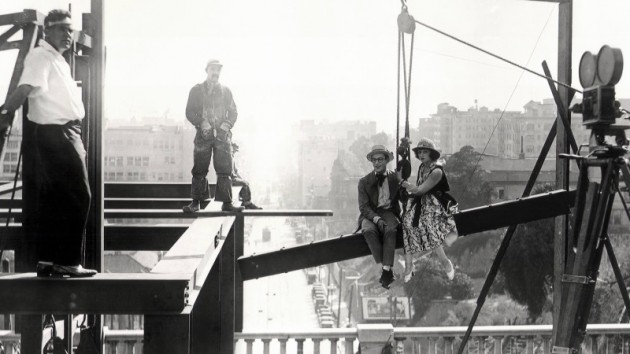
Hal Roach visible on the far left
There were no set photos taken or none that exist, since Lloyd and Roach wanted the illusion of how the thrill comedies were made to remain a secret, but on the Criterion Blu Ray of Safety Last the documentary feature, Locations and Effects explains how these special visual effects were achieved and John Bengson and visual effects expert Craig Barron visit the building that was used to film parts of Safety Last and they animate a mockup of how the effect was achieved. Of course the effect shots are sold by the judicious use of inserts of REAL stunt people walking on ledges or, as in the case of Safety Last, real life ‘human fly’ Bill Strother scaling the Los Angeles International Bank Building.
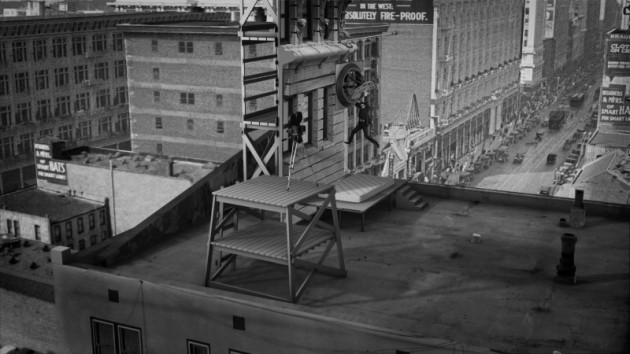
Although Lloyd came out on top of the clap-o-meter, the night of comedy ended with Max Linder, a professional comedian with about 200 short films in his career….so I wondered, why this short, Max Gets Married? When Mr. Spurrell began his intro to Linder by asking how many people were sleepy from getting up early to watch the royal wedding earlier that day between Prince Harry and Meghan Markle, well, there was the reason! Much has been made of Linder’s influence on Chaplin, spurred on by a photo that Chaplin sent to Linder signed, “To Max, the Professor, from his disciple, Charlie Chaplin.” Although later in his life Chaplin played down Linder’s influence, and barely mentions Linder in his autobiography. Though watching Linder’s short films today may not incite a fan of silent comedy to notice any influence, where Linder did influence Chaplin was in the broad sense of developing the first silent comedies that were as much dependent on character as pratfalls. Whereas comedians before Linder (like Frenchman André Deed) came from the comic revue, music halls or circus, where the humor was physical and broad, Linder was the first comedian to be aware of the camera and play up to the camera, which is something Chaplin excelled in and exhibited almost to a fault in his first two Mack Sennett shorts, Making a Living and Kid Auto Races at Venice (both 1914). One could also speculate that Linder’s persona, which was the well-to-do bourgeois dressed in dapper top hat and dress coat, getting in trouble because of too much time on his hands, might have influenced Chaplin in the reverse sense: Chaplin’s character of the tramp was on the opposite side on the social scale, but a tramp who tried to dress beyond his social means, with top hat, coat, tie, white shirt and walking stick. Chaplin’s Tramp night have been poor, but his skill behind and in front of the camera was royalty.



